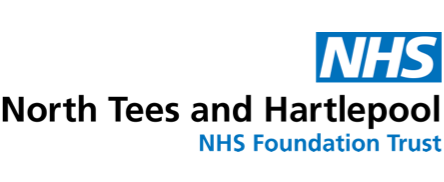
Real-Time Patient Reporting: Yellowfin at North Tees NHS

Background
North Tees and Hartlepool NHS Foundation Trust is an integrated hospital and community services organization based in the United Kingdom that provides health and healthcare services to people living in East Durham, Hartlepool, Stockton on Tees and surrounding areas. The Trust serves over 400,000 people, sees around 7,000 inpatients each month, and provides care in its two university hospitals and various community settings, including clinics, health centres, schools and people’s homes. It currently employs 5,500 members of staff, 80% of which are in patient-facing roles.
Like all hospitals, the Trust has stringent requirements around its data, including monthly reports and a major paper regularly sent to executives and the board. Its hospitals must also display patient data in the entrances of its hospital wards, such as number of falls or infections, and be updated by staff. To better meet its business intelligence (BI) reporting needs long-term, it turned to Yellowfin for help.
The ease of use, how quickly you can get a data flow in, a report built onto a dashboard and information out to your audience – you can get it done in a day, with no technical skill. That was the key deciding factor for choosing Yellowfin.
Keith Wheldon, Business Intelligence Manager – North Tees and Hartlepool NHS Foundation Trust
Challenge
Improving flow of data for staff and visitors to enhance monthly reporting and deliver real-time patient updates with context
In 2018, North Tees and Hartlepool NHS formed a specialized team from different directorates within the Trust to pull its technical expertise together and expand its search for a new BI solution.
The Trust previously used spreadsheets and another competing analytics platform for dashboards and reporting, and wanted to alleviate many of the pain-points it previously experienced:
- Spreadsheet dashboards were time-consuming with high manual effort, and prone to user error (wrong calculations, accidental edits)
- Only a handful of Trust staff knew how to use its BI toolset, as it required technical knowledge such as writing scripts and variables
- Management experienced difficulty in training new employees to use their BI tool after team member departures, limiting the flow of data
- Reliance on using a whiteboard with magnets daily to communicate patient information in its hospital wards, which required a lot of time for updates, and could be altered by patients or staff by mistake
“We thought as an organization, we really needed to push business intelligence to try and get our data out there to the masses,” said Keith Wheldon, Business Intelligence Manager at NHS North Tees and Hartlepool. “Be it internally, externally, in a more graphical way, we wanted to inform everyone about data and what it means, rather than people just receiving spreadsheet reports in their inboxes, and possibly missing them, or not really understanding the information in it.”
Keith was tasked with leading the search for a new BI platform that did not require high technical skill to produce good analytics and visualization. After examining other vendors, he referred to Gateshead NHS to see how Yellowfin was used by another Trust in a live environment, and soon put forward the plan for Yellowfin to be brought into the Trust.
Solution
Moving from time-consuming, highly technical reporting to user-friendly, data-led presentations with Yellowfin Present
NHS Hartlepool and North Tees signed off on Yellowfin as its new BI vendor in January 2019, after a live demonstration. “There were similar elements between the three other vendors, but the simplicity of using Yellowfin stood out,” said Keith. “The ease of use, how fast you can get a data flow in, a report built onto a dashboard and information out to your audience – you can get it done in a day, with no technical skill. That was the key deciding factor for choosing Yellowfin.”
With a 3-year license, Keith and his team started by replicating spreadsheet dashboard data into Yellowfin and automating their data flows, which they found seamless and helpful in creating smoother reporting for their departments. “Within the last year, we’ve started to push the boundaries of what we want to do with the platform, and where we’ve come from is phenomenal. We communicate constantly with Yellowfin on what we need, and learn from each other.”
One area the Trust has leveraged is Present, one half of Yellowfin’s data storytelling suite which allows users to combine narrative with data. The Trust uses Present to enhance its monthly reporting requirements. “I thought it would be great to have our board paper in there, instead of just a dashboard and in a Word document. We replicate all of that contextual information into Yellowfin, and have it automatically updated every month, with only minor manual updates from our admin systems.”
The BI team is also currently building presentation slides directly within Yellowfin, filled with data and up-to-date visualization to improve the flow of information in its hospital wards. These data stories will be used to display relevant metrics that pertain to that ward in near real-time on hospital screens.
Having this proposed level of information displayed in the wards greatly enhances the Trust’s Ward to Board narrative. It isn’t just for safety and quality purposes, Keith explains: “Staff members need to see what’s happening, and Present is an easy way for them to see at a glance, filter data specific to their area, and have it cycle 24 hours a day. When patients and family members are in the hospital, we can show our flu vaccine campaign, COVID rules, health and fitness slides, too. Everyone can see the same import.
Results
Effective and unified monthly reporting processes, and narrative-driven, real-time patient updates
North Tees and Hartlepool NHS Foundation Trust has significantly improved the flow of data throughout its hospitals for staff and visitors, and the availability of BI tools throughout the organization by leveraging Yellowfin’s automated, embedded and data storytelling capabilities.
“Before, BI was an absolute manual task, open to issues and errors; it wasn’t just time, either, but stress and frustration with the previous processes,” said Keith. “We’ve now reduced that and have a smooth system with Yellowfin, which does 90% of what we need to do for our reporting; our analysts just have to do the next 10%. Everything is slicker, easier and less stressful.”
“Present helps keep data available in one environment, and narrative concise and to-the-point without losing the factual content, thanks to the ways you can build stories in Yellowfin. We have a 40-page Present presentation, now our board paper, that contains statistical process controls (SPCs), key performance indicators (KPIs), latest value trend charts, author narrative, and whether you’ve hit efficiency, safety, quality standards – all within Yellowfin now. All we have to do is wait for the metrics to update, and then go in, edit it slightly, and provide our audience the story around what the charts and data say, and what we know – like patient lists and Referral to Treatments (RTTs) – and we write it in there, save it, and export to PDF for our board.”
Outside of the BI team, other areas are creating their own area-specific dashboards filled with relevant patient information, and have reduced the need to write everything in spreadsheets or documents by keeping all their data within Yellowfin itself. For Keith, this shows they’ve adopted a platform that can be used by non-technical staff.
“If we had a turnover of staff, they could quickly pick it up with no interruption in any of our data flows, dashboards and reporting. That’s a problem we wanted to get away from. Now, BI is easy enough to get the right people in and train them up, because Yellowfin is that simple to use.”
Future
Keith aims to continue to push the boundaries of Present, and further integrate data storytelling into their everyday BI workflows. The Trust is also beginning to use Stories, the second half of Yellowfin’s data storytelling product, to communicate narrative and data in two dashboards.
The first dashboard is around COVID patients from the start of the pandemic to present, and leverages the new data storytelling widget to automatically link reports from the NHS digital website Keith builds, using a JSON connector. ‘We can quickly benchmark ourselves against our region, and people can see data quickly as a narrative rather than a chart.”
The second dashboard, meanwhile, uses Stories to break down updates from Care Quality Commission into a more digestible, readable format. “Anyone who clicks on that dashboard can click on the stories and see a full narrative-driven breakdown of that data. Stories enables us to support our data with written narrative, allowing a universal organizational understanding.”
See for yourself
Let us show you the best analytics product on the market with the only analytics platform that combines action based dashboards, automated business monitoring and data storytelling capability.
Get a Demo
